by Specialdocs Consultants, LLC | Jan 1, 2021 | Patient News, Wellness

What are your 2021 Anti-Resolutions?
Year after year, the pattern rarely varies. Resolutions made, promptly followed by resolutions broken. The odds of sticking to New Year’s resolutions are, in fact, completely stacked against us, as research shows a paltry success rate of between 10 and 20%. But since the challenges of 2020 have reconfigured every aspect of daily living, 2021 may be the ideal time to reset this ritual as well. Perhaps it’s time we consider this upcoming new year, the year of the anti-resolution for dieting, exercising, eating healthier and managing stress.
We’ve asked therapists steeped in mindful eating, body positivity and resilient thinking to help reframe this perennial wish list. There are no checklists to mark off or milestones to meet, just inspiration to view yourself and the world around you through a new lens.
Instead of Dieting in 2021… Consider being more mindful about what you eat.
Replace the resolve to lose weight on a diet with a shift to mindful eating. “Keep in mind that while all diets work in the short run, there’s not a single plan that has long-term results for the majority of participants, and that’s why people make the same resolution every year,” says Judith Matz, nationally recognized speaker, therapist and co-author of The Diet Survivor’s Handbook and Beyond a Shadow of a Diet. “The deprivation that comes from dieting often leads to overeating or bingeing, setting into motion an endless cycle of frustration.”
Instead, learn to eat when you’re hungry and stop when you’re full, and choose from a wide variety of foods, including healthful ones.
Matz describes the essence of the process. “First, learn to recognize when you are just beginning to feel hungry. If you have a headache, are crabby, irritable, fatigued and low on energy, you’ve waited too long and are much more likely to overeat as a result.”
Next, think about what food would make you feel satisfied. “Sometimes a fresh apple or a raw carrot is exactly what you want, and at other times you might want ice cream or a bowl of pasta. Depriving yourself of foods you love can be counterproductive – there’s room for all types of food,” she says.
For patients with specific medical issues, such as high cholesterol, Matz notes that adjustments can easily be made while still respecting the process: a craving for ice cream can be met with a sorbet instead.
Finally, trust your body to let you know when to stop eating. While that may sound simple, Matz counsels patience, especially for chronic dieters. “It can take time to tune in to your natural cues for both hunger and satiety.”
The key is to stop having rules around food and to really listen to your body. “Ultimately it’s about having a healthy relationship with food rather than focusing solely on eating so-called healthful foods,” she says.
Moving from body image to body appreciation.
An equally important shift is changing the desire for a new body size to a genuine appreciation of the body you have. Matz defines this as “body positivity, relating to your body with acceptance and respect rather than self-criticism and shame.” It means rejecting ingrained cultural messages related to body embarrassment and weight stigma and replacing them with ones that reflect inclusiveness and self-compassion. It encourages taking pleasure in natural body changes throughout your life cycle and not putting off anything you might enjoy doing because you’re not the “perfect” size or shape.
Body positivity also empowers you to view exercise positively rather than as punishment for having the wrong body. “Unhook exercise from weight, and focus on choosing exercise for endurance, strength, flexibility, stress reduction, health, social connection or just the simple pleasure of moving your body,” advises Matz.
Finally, refrain from focusing on weight loss praise, which reinforces the mistaken belief that you can’t be happy, healthy and successful unless you’re a certain body size, says Matz.
“Consider that body positivity is a gift we can give to support family, friends and, most notably, the next generation.”
Find joy in what you do and who you surround yourself with to reduce stress.
Resolving to manage stress effectively is an oft-expressed but infrequently realized New Year’s wish. But it can be triggered by one pivotal question, says influential family therapist Debbie Gross, who asks it at every session with a new client: “What brings you joy?”
She explains, “It’s transformational in terms of moving out of the survival mode many experienced last year, and into thriving mode. When people are in crisis, they become overwhelmed by the thought that no one will meet their needs. Their only goal is to focus on how to get through this moment; their attitude is ‘If I don’t take care of me, who will?’”
To stop the “anxiety spiral” in the brain, Gross recommends the “5, 4, 3” grounding exercise for staying in the present: “Focus on five things you can see, four things you can hear and three things you can feel, either physically or emotionally.”
And while it’s all too easy to devolve into perpetual doom and gloom against a backdrop of unceasing anxiety, Gross says we have a choice – Eeyore or Tigger?
“We can wake up each day just waiting for the next problem to come our way, or we can look at the world with more of a ‘beginner mind’ that recognizes small, everyday miracles,” she says. “It takes real work for some to switch the channel in their brain to that mindset, but the difference it makes is astounding.”
The post New Year’s Resolutions Are So 2020! appeared first on Specialdocs Consultants.
by Specialdocs Consultants, LLC | Jan 1, 2021 | Patient News, Staying Active, Wellness

A Winter Workout Routine Will Prepare You For Life After COVID
Exercise will reduce pain, improve function and mobility, lower blood pressure and blood sugar, decrease risk of chronic illness and death from heart disease and many forms of cancer, enhance mood and focus, and may even help reduce your risk of contracting COVID-19.
Despite those compelling benefits, only 5% of us stick to an exercise regimen. With months of staying close to home base ahead, we asked national exercise expert Dr. Josh D’Angelo, PT, of MovementX to help us beat the odds and emerge from our winter cocoons fitter, stronger and more limber than before.
“Recent research has shown that even a little bit of exercise and movement is beneficial in improving your movement, health and life,” says Dr. D’Angelo. “We start with a focus on functional strength training exercises because it provides the best protection against future injury and helps with everything from mobility to balance. To maximize your gains, we encourage supplementing with 15-20 minutes of aerobic exercise, such as walking briskly, riding a stationary bike, dancing … or anything that gets you moving and you enjoy! And remember, every little bit of movement helps.”
Following are some ways to get started, from MovementX’s “AgeProof Your Body” program:
Work toward repeating three complete sets of these fundamental exercises: squats, pushups and abdominal strengthening for your core. Start with 5-8 repetitions each, and build weekly. Rest, repeat.
- Squats. Focusing on lower body and core strength, this is one of the most functional activities and will also get your heart rate going. Proper mechanics are important.
-
- Stand up straight, feet shoulder width apart.
- Slowly bend knees and drop your hips backward to sit in chair. Rise and repeat.
- Pro Tip: Push energy down in your heels and into the midfoot – you should be able to wiggle your toes, and you should not feel discomfort in your knees or back.
- Advanced: Add load (dumbbells or household objects) or vary your speed as your strength and endurance improve. Adding repetitions can also increase the challenge
- Pushups. These are challenging, but start with this beginner position and perform 5-8 repetitions until you can advance to a lower position and more reps.
-
- Start by standing 18-24 inches away from a wall. Extend your arms and place your hands on the wall, shoulder width apart. Lean toward the wall, keeping your arms straight
- Bend your elbows, allowing your body to come closer to the wall – let your chest lead, and keep your body straight.
- Push away. You should feel this in your chest, shoulders and core.
- Advanced: How low can you go? As you progress with the wall pushup, start with your feet farther away from the wall. Even lower? Position your hands on a sturdy chair for a lower incline. Lower? Go to the floor on your mat, starting with your knees set on the floor. The lowest is going for the full pushup position with only your hands and toes touching the floor.
- Abdominals Series. Core strength is key to developing functional fitness that helps prevent injuries, reduce back pain and make your daily activities easier to accomplish.
- Setup: Lie on your back with knees bent, feet on floor, and arms by your sides. Your lower back should not be arched at all during this exercise; push it down into the floor to tighten abs.
- Slowly bring knees up toward your chest as you bend your elbows to let your hands meet your knees (at the edge of the thigh).
- Push your hands into your thigh just where it meets your knee, pressing your hands up and toward the ceiling. Continue to do this for 20 seconds. Make sure to breathe! Work your way up to holding for 30 seconds.
The post Start 2021 off Right by Sticking to your Winter Exercise Plan appeared first on Specialdocs Consultants.
by Ivan | Oct 12, 2020 | Patient News, Wellness

Finding Peace Through Mindfulness and Meditation
Mindful, compassionate, serene, happy: emotions that have been in short supply during the pandemic but can be beautifully restored to those who embrace the chance to learn the time- honored practice and art of meditation. For many, it is as easy as downloading the Headspace app on their smartphone, receiving a seamless introduction to a technique the company describes as “rooted both in ancient history and modern science.”
There’s an App For That
Meditation has been practiced for over 3,000 years, and its benefits, improving well-being, helping eliminate insomnia, enhancing focus, decreasing stress, and reducing blood pressure, among many others, have been studied for decades.
But the real democratization of meditation may have been ushered in by the proliferation of apps like Calm, Buddhify, Insight Timer and Simple Habit. Since its 2010 debut, global leader Headspace has been downloaded more than 65 million times, a number that has steadily risen during the coronavirus crisis.
Dr. Megan Jones Bell, the company’s chief science officer, reports a tenfold increase in those starting the “stressed” meditation and a twelvefold increase in “reframing anxiety at home” users from mid-March to mid-May of 2020.
Getting Started
First, choose a time to meditate, and consistently make it part of your daily routine. Find an uncluttered, quiet spot where you won’t be disturbed. Make yourself comfortable in a chair or on the floor with a pillow behind you, close your eyes and allow yourself to let go. It’s natural to wonder, “Am I doing this right?” The experts at Headspace offer some gentle guidance:
- If your body is fidgeting or your mind keeps constantly chatting, you may want to walk away from the feeling. Instead of giving up, just write off the first few minutes and give your mind time to slow down. It’s not time wasted, but time spent training the mind.
- Dozing off occasionally during the first few weeks of meditation is normal. If it keeps happening, try a different time of day, sit up a little straighter or splash a little cold water on your face before you meditate.
- You may feel all sorts of unpleasant emotions, such as impatience, irritation and rage. Don’t suppress them, but give them the space to arise, unravel and ultimately fall away. Do the same if you’re fixated on a particular worrisome thought, or if you’re experiencing sadness. Acknowledge the feeling, even shed a few tears, and keep meditating.
- If you find yourself planning incessantly in a way that is unproductive and unhealthy, let those thoughts go and come back to your focus – a breath, an image, a way that is unproductive and unhealthy, let those thoughts go and come back to your focus – a breath, an image, a sound.
- Find the sweet spot between pushing yourself too hard and not applying enough focus. You may have a certain idea of what meditation should be, but it’s important to get out of your own way and give the experience room to breathe.
More Than One Way to Meditate
More than a dozen different types of meditation are taught, including:
- Guided: Form mental images of places or situations you find relaxing.
- Mantra: Silently repeat a calming word, thought or phrase to prevent distracting thoughts.
- Mindfulness: An increased awareness and acceptance of living in the present moment; observe thoughts and emotions, but let them pass without judgement.
- Calming: Cultivate a quieter, more peaceful state of mind and improved concentration.
- Insight: Set an intention to develop qualities such as wisdom and compassion.
- Body scan: Sync body and mind by performing a mental scan and paying attention to any discomfort or tensions.
- Visualization: Focus on a mental image.
- Loving kindness: Direct positive energy and goodwill to yourself and then to others.
- Resting awareness: Let thoughts simply drift away.
- Zen: Focus on following the breath to foster a sense of presence.
- Chakra: Bring the body’s core centers of energy into balance.
The post Let It Go: The Ancient Art of Meditation appeared first on Specialdocs Consultants.
by Specialdocs Consultants, LLC | Jul 7, 2020 | Patient News, Wellness

How to Adjust, Adapt and Embrace the New Normal
As we emerge cautiously from the safety of home into a world that seems comfortingly familiar yet irrefutably altered, a swirl of conflicting emotions is certain to be triggered. Relief and thankfulness may mingle uneasily with fear, anxiety and uncertainty, making it difficult to cope at times. Concierge psychologist Dr. Rebecca Johnson Osei, MA, PsyD, ABPP, shares her thoughtful perspective on navigating uncertain times with hope and optimism.
Q: What are some of the short- and long-term effects of the COVID-19 crisis on our mental health?
Dr. Johnson Osei: We’re seeing increases in anxiety and depression. Loneliness has also been a concern, due to social distancing, especially for older populations who may be more isolated from family and friends. Some are feeling grief, particularly those who weren’t able to say goodbye to a loved one, and survivor’s guilt, a common reaction to traumatic events. And most of us keenly miss the sense of control over our daily lives.
Q: How can we best manage these feelings?
Dr. Johnson Osei: Most importantly, allow yourself to experience all these emotions without guilt or judgment. They’re simply part of being human. While much of what we’re feeling may be remedied with time, be mindful and address your feelings now so they don’t become long-term issues. Also realize that you can regain control of your narrative by “reframing” your decisions. For example, instead of feeling forced to stay inside, frame it as a decision you made to protect your family. It changes your mindset when you realize that, ultimately, your behavior is your choice.
Q: Are there positive behaviors you’re seeing as a result of people learning to cope with unprecedented circumstances?
Dr. Johnson Osei: A number of really significant ones. People are gaining a renewed appreciation for the people and things they love. One-on-one time and simple human touch are valued so much more now. I imagine when friends and families reunite, there will be some really great long hugs! Being more aware of our mortality is also helping people cherish life, realizing it truly is a gift that can disappear in a second.
Being solitary and alone with our thoughts is a struggle for some, but it’s emotionally healthy to be able to entertain yourself and meet your own needs. For most Americans, coping with the discomfort of not being able to do what they want, when they want to do it, is a tough lesson, but it’s a good one to learn.
The need to connect has driven a much greater acceptance of technology than existed just a few months ago. There’s a growing willingness to think outside the box for new, ingenious ways to stay connected, and I believe this will carry on in our society well beyond the current crisis.
Q: What lessons learned from previous world crises can help guide us?
Dr. Johnson Osei: Think about how 9/11 fundamentally changed the way we travel. At first, it seemed untenable – the security lines were long and slow-moving, no one had the right size toiletries. It all feels completely normal now, and we know how to navigate the lines, pack our toiletries correctly, and wear shoes that slip on and off easily. Humans are incredibly resilient, and it’s why we’ve survived as a species. We don’t know what the new normal will look like, nor can we predict if this will go on for months or maybe years. But we do know we will adapt, and it will get easier.
Q: Any recommended strategies as we move to the next phase?
Dr. Johnson Osei: Go at the pace that’s right for you as an individual, even if it may not align with your city or state’s approach. Just because you can do something doesn’t mean you should. Be an outlier if wearing a mask or working from home makes you feel more comfortable.
Finally, it’s so important to remember: Life may be different, but this is not the end of the world we knew – it’s literally a new beginning.
The post Navigating Uncertain Times with Hope and Optimism appeared first on Specialdocs Consultants.
by Ivan | Apr 1, 2020 | Patient News, Wellness

Unleashed: The Healing Power of Dogs
“Who rescued whom?”
They’re already considered best friends, trusty companions and beloved members of the family. Now add to the dog’s list of accomplishments, heart healer, exercise coach, and mood enhancer, and the answer to the question above, often used by rescue organizations, becomes even more meaningful. There is new a body of research that goes beyond the anecdotal charms of dog ownership to provide some increased evidence around the health benefits of pet therapy.
 The impact on patients with cardiovascular disease (CVD) was initially noted by the American Heart Association in 2013 after an examination of studies reporting beneficial effects of dog ownership, including increased physical activity, favorable lipid profiles, lower systemic blood pressure and stress levels, and improved survival after a heart attack. The AHA’s measured conclusion then was that dog ownership “may be reasonable for reduction in CVD risk,” and further research was recommended.
The impact on patients with cardiovascular disease (CVD) was initially noted by the American Heart Association in 2013 after an examination of studies reporting beneficial effects of dog ownership, including increased physical activity, favorable lipid profiles, lower systemic blood pressure and stress levels, and improved survival after a heart attack. The AHA’s measured conclusion then was that dog ownership “may be reasonable for reduction in CVD risk,” and further research was recommended.
Studies show the dog ownership can have healing powers
Late in 2019, a meta-analysis of studies, including data from 3.8 million patients, further bolstered the concept that dog ownership can play a significant role in reducing CVD risk factors by alleviating social isolation, improving physical activity and lowering blood pressure. According to the study, compared to non-owners, dog owners experienced a 24% reduced risk in all-cause mortality, 31% reduction in mortality due to cardiovascular-related issues and 65% reduced risk of mortality after a heart attack.
The AHA noted that while the non-randomized studies can’t conclusively “prove” that owning a dog leads directly to reduced mortality among heart attack and stroke survivors, “the robust findings are certainly suggestive of this” and set the stage for additional exploration.
“The results were very positive,” affirmed researcher Caroline Kramer, MD. “The next step would be an interventional study to evaluate cardiovascular outcomes after adopting a dog and the social and psychological benefits of dog ownership.”
A dog owner herself, she added, “Adopting Romeo [her miniature Schnauzer] has increased my steps and physical activity each day, and filled my daily routine with joy and unconditional love.”
Pet ownership is a long term commitment
As compelling as the statistics are, researchers emphasize that dog adoption should never be done for the primary purpose of reducing CVD risk. The long-term commitment and lifestyle changes involved in dog ownership must be fully understood and accepted.
Consider these questions:
• Do I have time to care for and clean up after the dog?
• What type of environment does the dog need to thrive?
• How large will the dog get and how much exercise will it need?
• What is the dog’s life span, and can I commit to caring for it throughout its life?
• How much will veterinary care cost?
Animal-assisted therapy
The healing power of dogs extends well beyond the home as their value in helping decrease pain, stress and anxiety and aid recovery in people coping with a range of health problems is increasingly recognized. Therapy dogs provide comfort to nursing home residents, hospice patients, prisoners, children coping with trauma, and veterans suffering from post-traumatic stress disorder (PTSD), among others. The field of animal-assisted therapy is growing rapidly, as seen in the success of Mayo Clinic’s Caring Canines program, now in its 10th year. More than a dozen registered therapy dogs make their daily “rounds” of hospital rooms and clinic waiting areas.
“If someone is struggling with something, dogs know how to sit there and be loving,” researcher Dr. Ann Berger explained in the National Institute of Health News. “Their attention is focused on the person all the time.”
The post Pet Therapy: The Healing Power of Dogs appeared first on Specialdocs Consultants.
The post Pet Therapy: The Healing Power of Dogs appeared first on Specialdocs Consultants.
by Ivan | Dec 2, 2019 | Medical Conditions, Patient News, Wellness
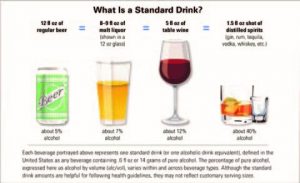
The Female Factor: Alcohol is Not Gender-Neutral
Given the growing popularity of the cocktail culture and wine time, it’s important to know that alcohol affects women differently than men – physiologically, psychologically and socially. It’s worth asking: For women, is the wine glass half full or half empty when considering the risk-versus-benefit ratio?
First, there is the difference in women’s body composition. Women have more total body fat and less total body water than men. As a result, alcohol is less dispersed, resulting in a higher blood alcohol level, drink for drink, than in men.
Metabolism also plays a role
Women produce less of the alcohol dehydrogenase (ADH) enzyme that controls the rate at which alcohol is broken down in the body. This means a blood alcohol level that rises more quickly in women and stays elevated longer. Women are more vulnerable than men to alcohol’s effects on other levels too: more likely to black out from drinking, to suffer from mood and behavioral changes and to more rapidly develop an addiction. Women may also experience higher rates of depression and anxiety, often drinking in response to negative emotions and problems with loved ones versus men’s tendency to drink for positive reinforcement and pleasure.
High Drinking Rates in Women: A Cause for Concern
All these factors make the record high drinking rates for women a real cause for concern. Problem drinking rose by 83% among women from 2002 to 2013, rapidly closing – in a most unfortunate way – a gender gap that has existed for decades. Current statistics show that 5.4 million women over 18 may be considered as having alcohol use disorder (AUD) and need treatment. However, gender plays a role here too, as women who consistently seek treatment for almost every other physical and mental health problem at higher rates than men are far less likely to do so for alcohol-related problems. Less than 1 in 10 women get formal help, hindered by the stigma of addiction and feelings of guilt or shame in not being able to function as caregiver for their family.
Alcohol’s impact on other disease is mixed. There is evidence that one drink a day may reduce women’s risk of heart attack, cardiovascular disease and the most common type of stroke. The risk of breast cancer, however, increases by 5 – 9% and rises with each additional drink per day. It’s worth noting that taking a multivitamin fortified with 400 mcg of folic acid daily may lower some of women’s elevated risk from alcohol, according to recent studies.
Alcohol in Moderation is Key
The best advice, as with most of life’s issues, is moderation. Avoid alcohol if pregnant or if you have a personal or family history of breast cancer, liver disease or alcohol abuse. Otherwise, consuming one drink a day is generally healthy, so be knowledgeable about how to measure that (see below) and enjoy a glass with friends or at special events. Don’t try to match the pace of male celebrants, especially if they’re over-imbibing. In fact, gently steering them away from the bar and onto the dance floor may be the healthiest move for all.
Heavy drinking for women = more than one drink per day or seven-plus drinks per week
Did You Know?
Alcohol use disorder is characterized by symptoms such as:
· excessive time spent drinking
· needing to drink more to get the same effect
· wanting a drink so badly you can’t think of anything else
· inability to stop drinking despite the impact on work and family
*Source: National Institute on Alcohol Abuse and Alcoholism
The post Alcohol Affects Women Differently than Men appeared first on Specialdocs Consultants.



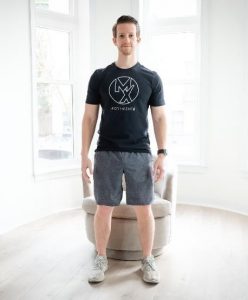
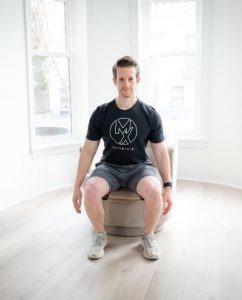
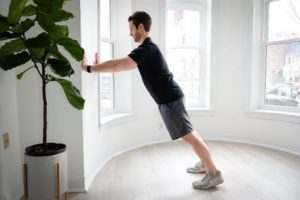


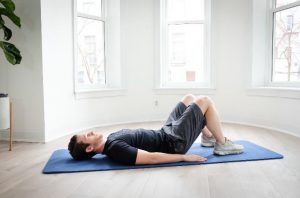




 The impact on patients with cardiovascular disease (CVD) was initially noted by the American Heart Association in 2013 after an examination of studies reporting beneficial effects of dog ownership, including increased physical activity, favorable lipid profiles, lower systemic blood pressure and stress levels, and improved survival after a heart attack. The AHA’s measured conclusion then was that dog ownership “may be reasonable for reduction in CVD risk,” and further research was recommended.
The impact on patients with cardiovascular disease (CVD) was initially noted by the American Heart Association in 2013 after an examination of studies reporting beneficial effects of dog ownership, including increased physical activity, favorable lipid profiles, lower systemic blood pressure and stress levels, and improved survival after a heart attack. The AHA’s measured conclusion then was that dog ownership “may be reasonable for reduction in CVD risk,” and further research was recommended.
Recent Comments